Watthour
Electron Rancher - JS3600
A SX-4½ arrived FEDEX this morning. "Won't power up..." was the stated problem. As is customary, "No other testing was done..." and no one had any clue what might be wrong. Those are the kind that are right up my street.
Opened from the Kleenex box it was shipped in. pulled the sides and top, blew out the cat hair, cigar ashes, and 40 years of dust. Tossed it on the bench, connected a 40W in the DBT, and powered on. Nichto. Removed from power, metered switch, main fuse, and transformer primary, where I decided it was time to stop. The primary was as open as a California border.
About eight screws later and a little coercing the wires, and the thermal limiter was exposed. Of course, it was open as well. Fortunately, it had done its job and protected the transformer from the external abuse to which it had been subjected:
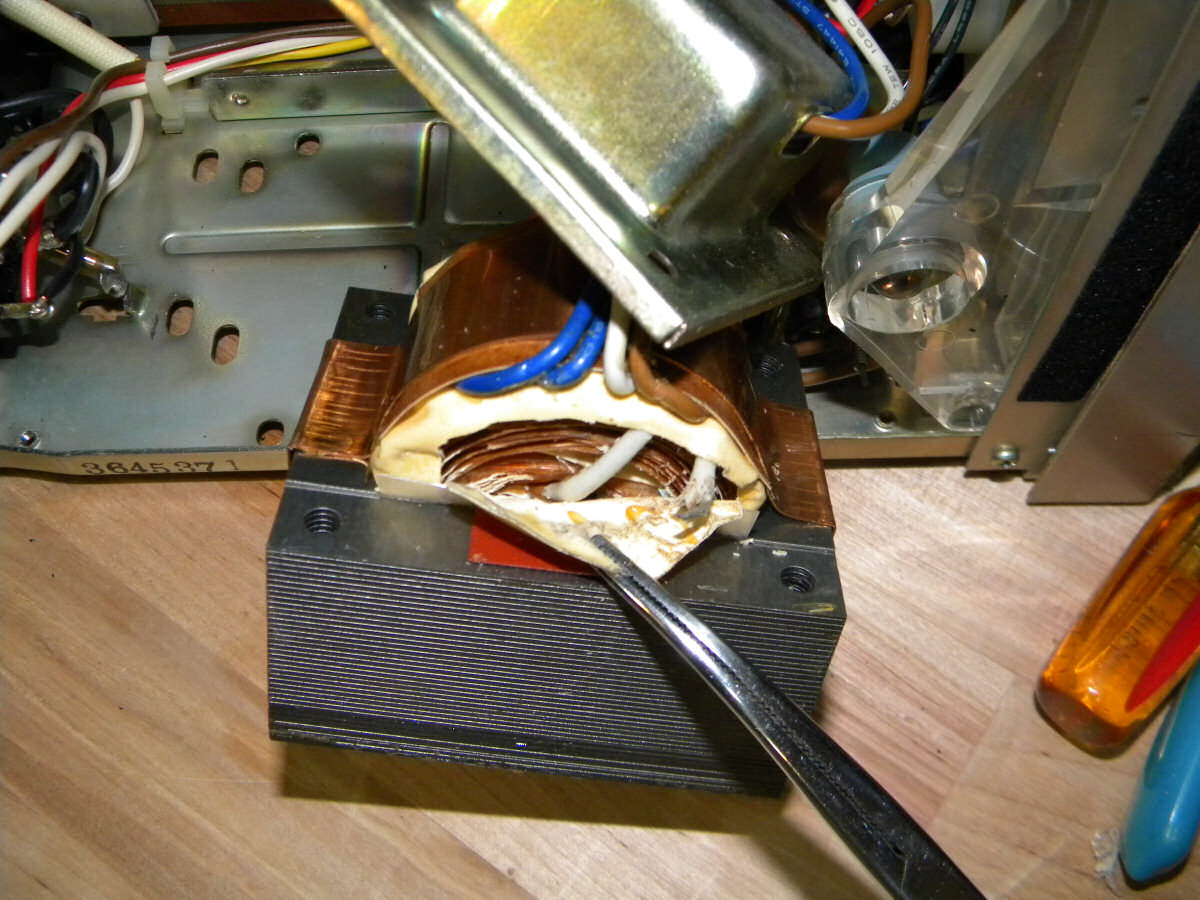
Time for surgery:
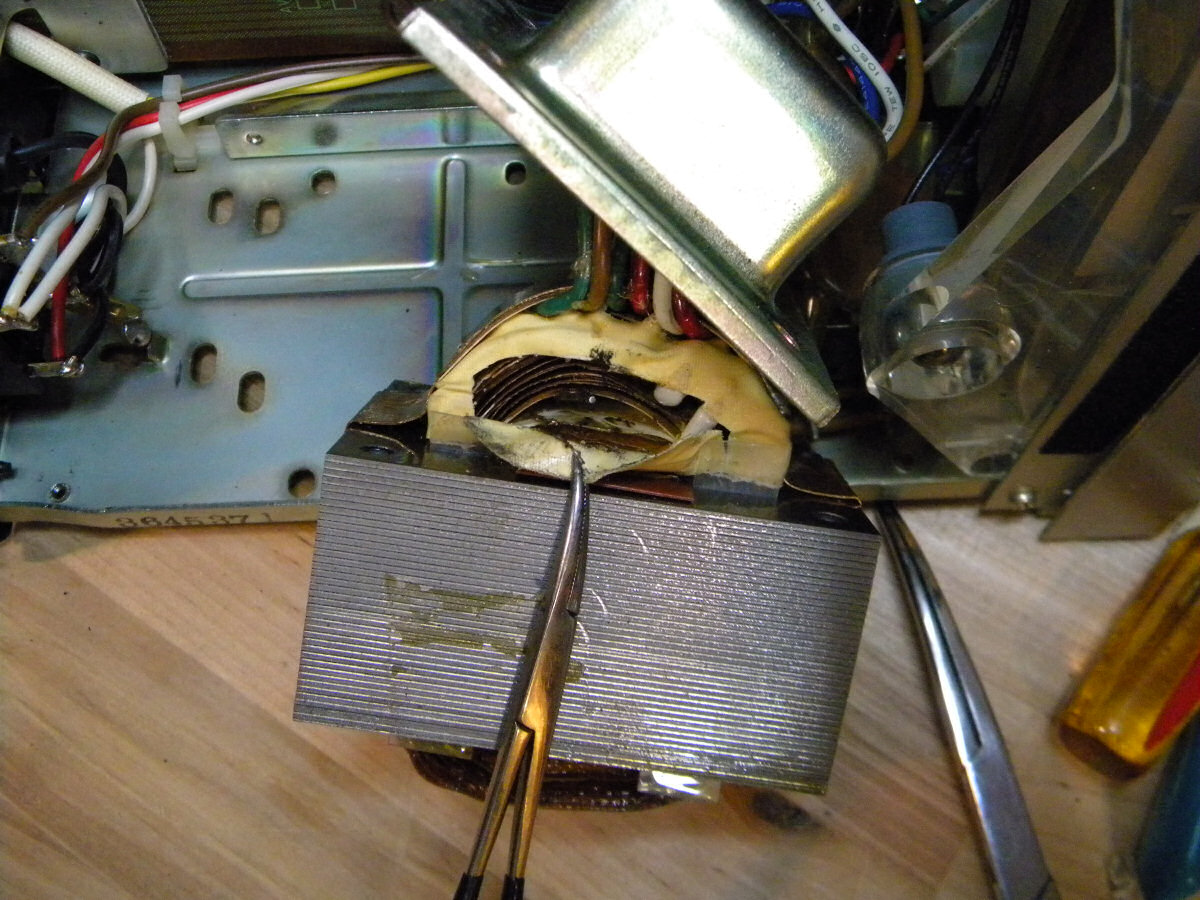
With the dead fuse exposed and pulled, it was time to hunt down the replacement. The fuse was rated at 169°C / 15A:
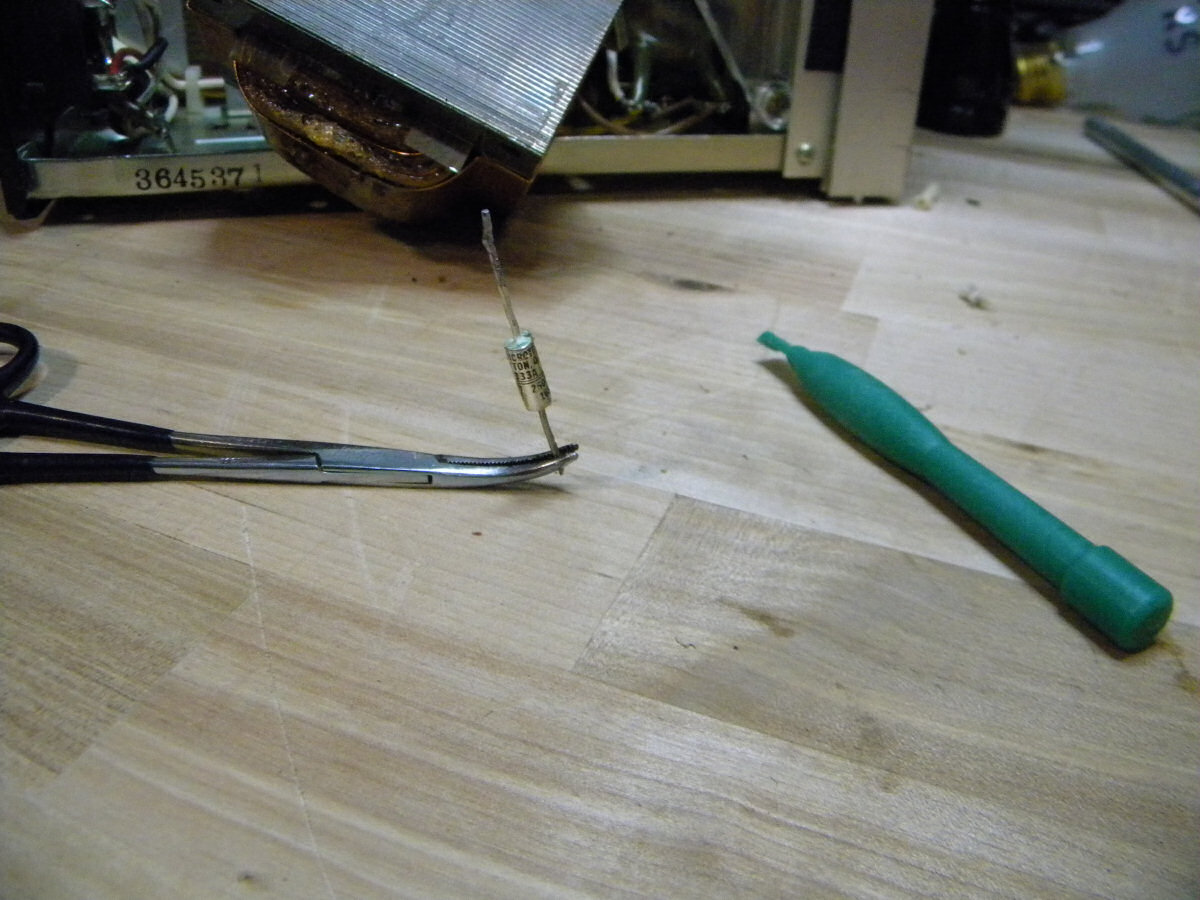
Fortunately, I keep a some spares on hand for just such an occasion. It's one of the few things NTE is good for:
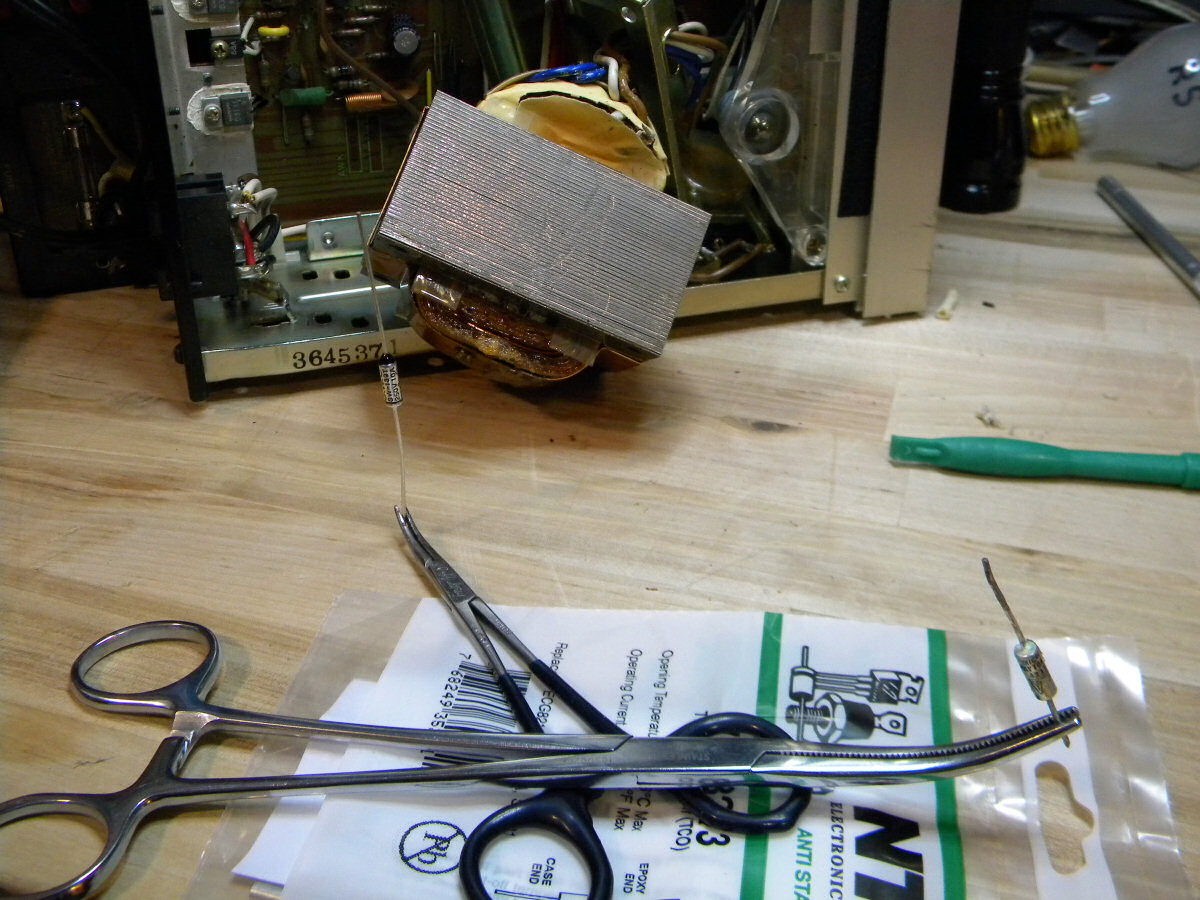
With the new fuse buried into the winding, it was time to make the connections:
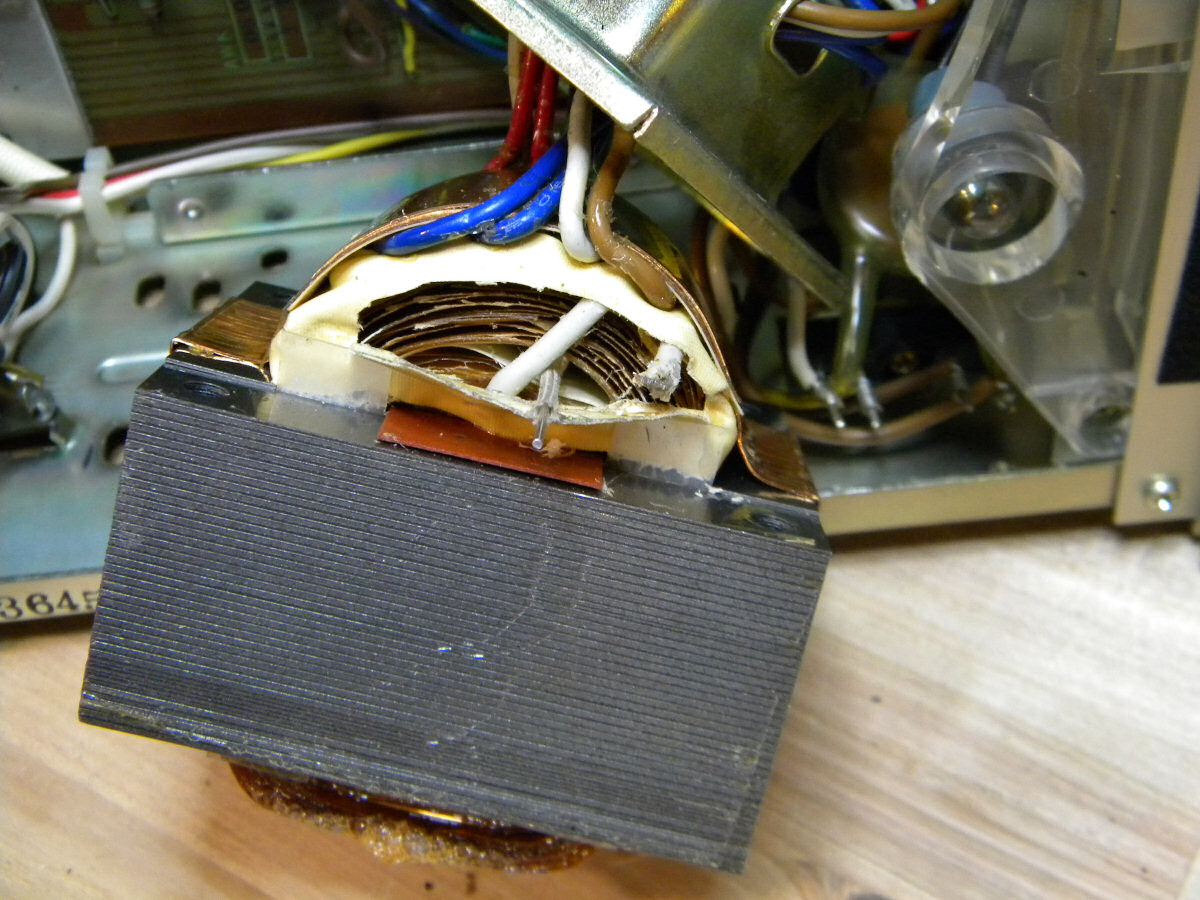
A little fiberglass sleeve over the connections, and sealing up the firecloth with enamel:
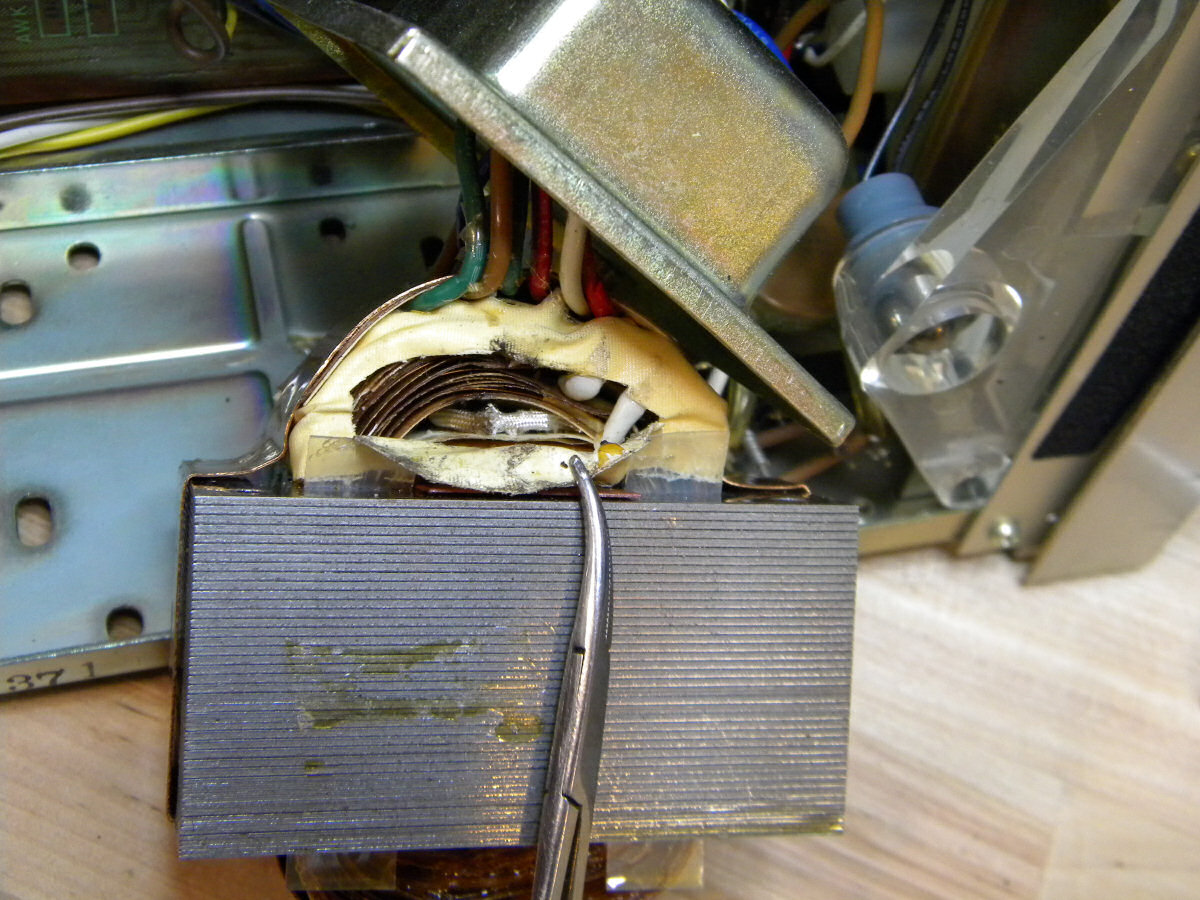
After that, I re-canned the transformer and put it all back in place. After a few minutes of assembly and allowing the enamel to flash off a bit, it went back on the DBT at 40W.
I swear it lit up my whole office. It wasn't totally unexpected, but was actually a GOOD sign. Upon further review, the cascade of problems became apparent. I found all the fuses in the unit had been replaced with brand-new Bussmann 10A/250V replacements. Well, it makes sense - If you're going to buy a whole box of 10A fuses you might as well use them all, right?
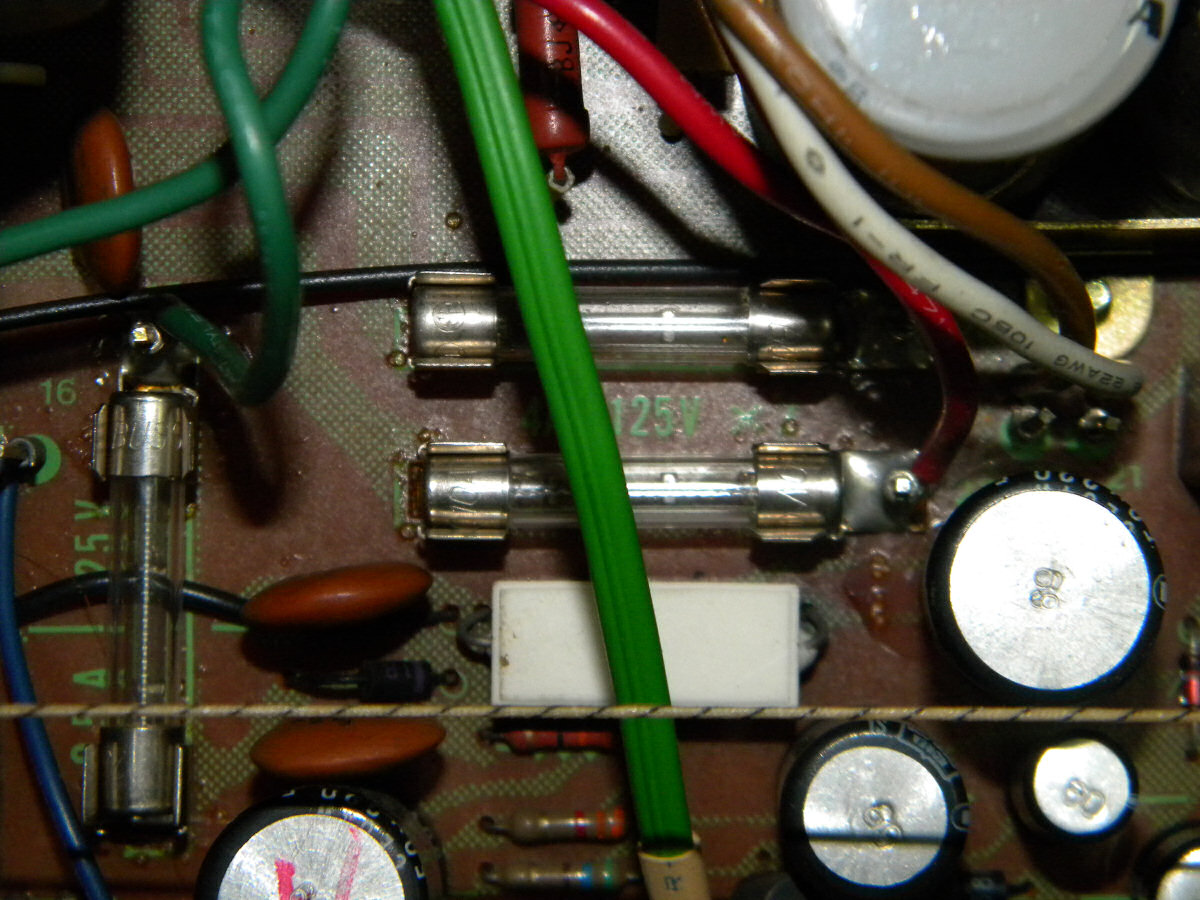
I pulled the fuses from the main bus/rail supply and tried it again on the DBT. It lit, dimmed, and I had dial lights. It actually powered up the 13V supply so the tuner even reacted. Amazing.
After a bit more poking around, you might have thought that the charcoal on the AF board would have been a clue. I'm not certain if it was before or after the 10A fuses were installed, but I am certain it was before the transformer fuse left the building. One, just one of the outputs had gone E-C shorted, and started the cascade of errors until the owner could no longer plug in fuses or parts enough to even make it light up.
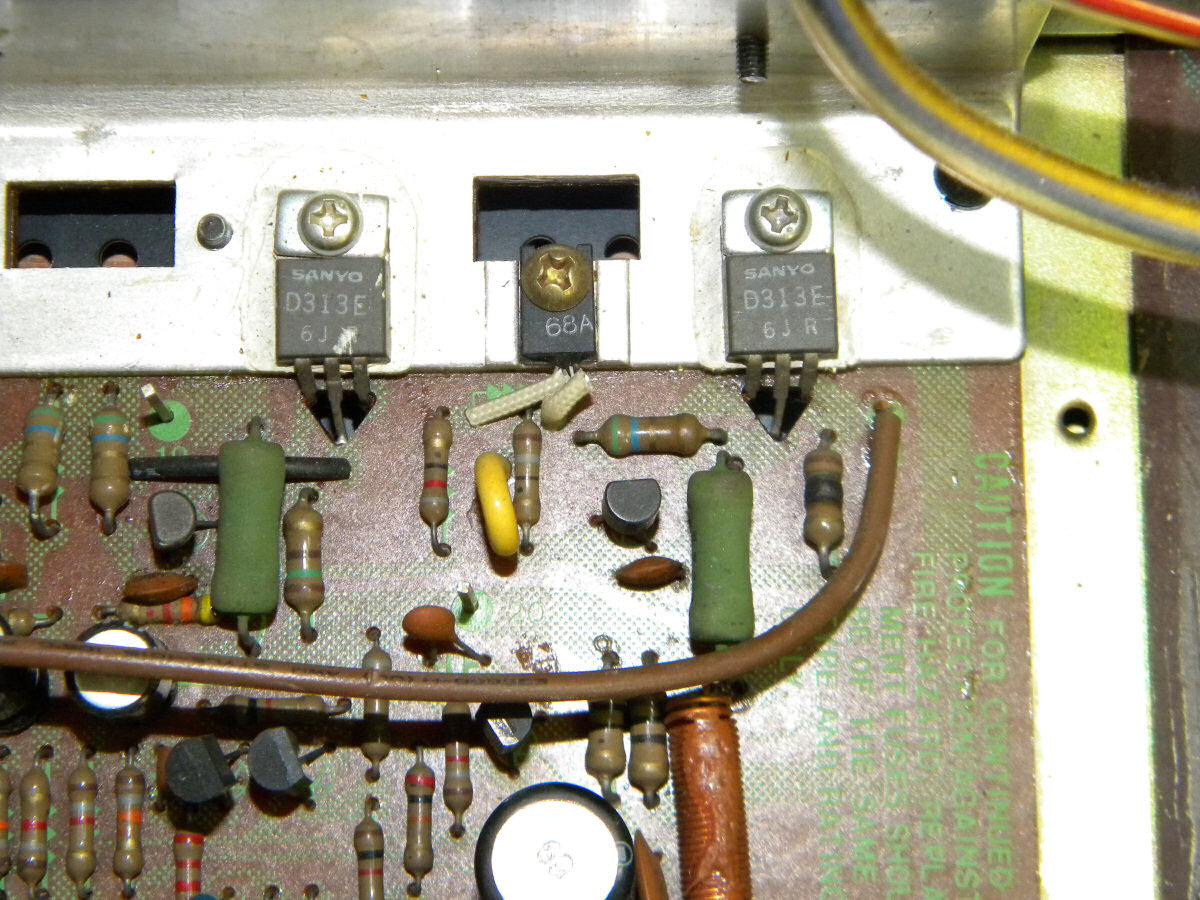
And the auction listing simply stated "Won't power up..."
Opened from the Kleenex box it was shipped in. pulled the sides and top, blew out the cat hair, cigar ashes, and 40 years of dust. Tossed it on the bench, connected a 40W in the DBT, and powered on. Nichto. Removed from power, metered switch, main fuse, and transformer primary, where I decided it was time to stop. The primary was as open as a California border.
About eight screws later and a little coercing the wires, and the thermal limiter was exposed. Of course, it was open as well. Fortunately, it had done its job and protected the transformer from the external abuse to which it had been subjected:

Time for surgery:

With the dead fuse exposed and pulled, it was time to hunt down the replacement. The fuse was rated at 169°C / 15A:

Fortunately, I keep a some spares on hand for just such an occasion. It's one of the few things NTE is good for:

With the new fuse buried into the winding, it was time to make the connections:

A little fiberglass sleeve over the connections, and sealing up the firecloth with enamel:

After that, I re-canned the transformer and put it all back in place. After a few minutes of assembly and allowing the enamel to flash off a bit, it went back on the DBT at 40W.
I swear it lit up my whole office. It wasn't totally unexpected, but was actually a GOOD sign. Upon further review, the cascade of problems became apparent. I found all the fuses in the unit had been replaced with brand-new Bussmann 10A/250V replacements. Well, it makes sense - If you're going to buy a whole box of 10A fuses you might as well use them all, right?

I pulled the fuses from the main bus/rail supply and tried it again on the DBT. It lit, dimmed, and I had dial lights. It actually powered up the 13V supply so the tuner even reacted. Amazing.
After a bit more poking around, you might have thought that the charcoal on the AF board would have been a clue. I'm not certain if it was before or after the 10A fuses were installed, but I am certain it was before the transformer fuse left the building. One, just one of the outputs had gone E-C shorted, and started the cascade of errors until the owner could no longer plug in fuses or parts enough to even make it light up.

And the auction listing simply stated "Won't power up..."



